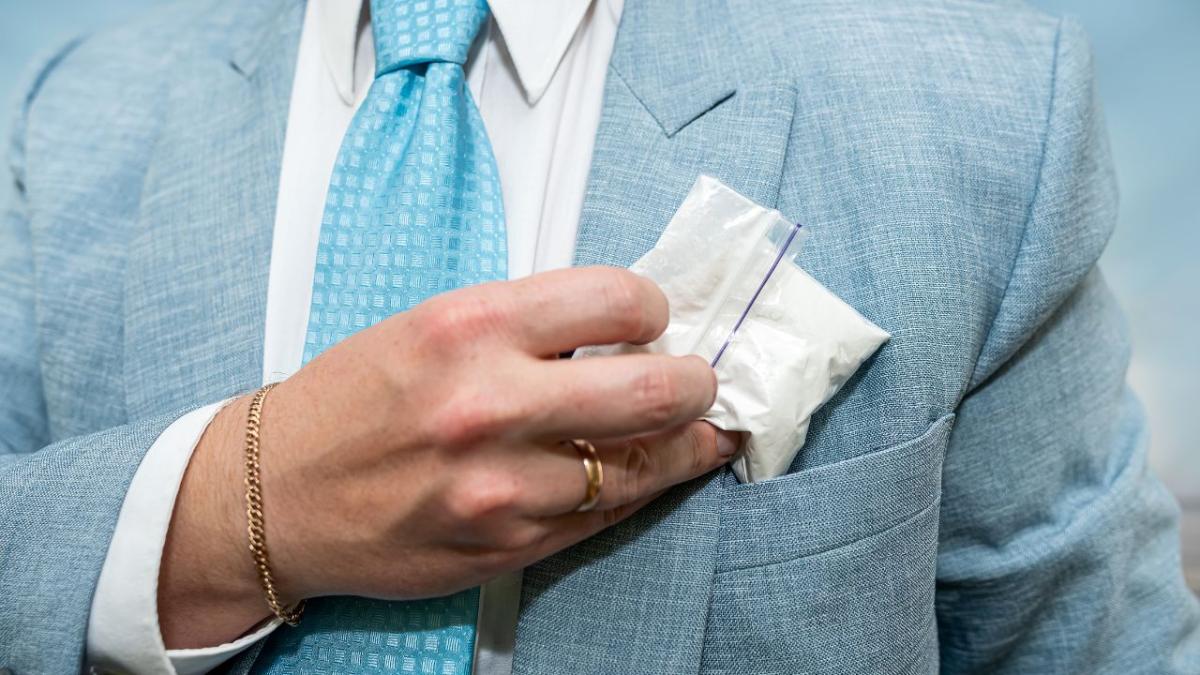
A new docuseries on the production of Aussie cocaine has shon a light on what really goes into the white powder your bestie is (allegedly) racking at the company Christmas party. Spoilers: it isn’t flour and pixie dust.
The Daily Telegraph‘s new series Narcos On The Front Line explores the highs (hehe) and lows of the global drug trade and how Australia’s rampant desire for blow has fueled it for years.
One of the most interesting scenes that has people talking, however, is the play-by-play on how Aussie cocaine is actually made.
First, lets take a journey to the mountains of Colombia, where jungle labs make the spicy powder we all know and love.
What you’ll need
- 500kg of coca leaves.
- A whipper snipper (it’ll make sense later).
- Cement.
- A 44 gallon drum of petrol.
- Sulfuric acid.
How to make
Per the docuseries, 500kg of coca leaves are stripped from trees and then cut up into a lovely little salad with a whipper snipper.
Cement is then added to the leafy greens. It’s mostly used as a filler to help farmers sell more of their quality product.
Once that’s mixed up nicely, it’s all added into a drum full of petrol. If you don’t have any pre-made petrol at home, store-bought is just fine.
Petrol is used to “refine” the coca leaves into the cocaine you’d (allegedly) see atop the toilets of Star Bar. It helps break down the leaves and bring out the psychoactive properties. Otherwise snorting eucalyptus would be just as effective.
Sulfuric acid is then added to the petrol to separate cocaine paste from it, and the rest is history.
Farmers sell to smugglers, smugglers sell to gangs, gangs sell to Steve and Steve sells to you on [REDACTED]. The circle of life. The very illegal and very dangerous circle of life.
Commentary
“The huge value of cocaine in Australia, for instance, it is very productive for a criminal or for a Narco to sell a kilo in Australia because it’s a very high value and the earnings are incredible,” Colombia National Police Major Luis Guillermo Narvaez Freyre said in the docuseries.
“So that is something that leads them to take drugs to that country. Of course, there are some issues related to the consumption, but that’s how a problem there is worldwide [sic].
“And this is how we can identify that drug traffickers change the routes to Australia and they can shift to Mexico, they can shift to different countries depending on the demand in these places.”
The docuseries also spoke to Australian Federal Police Assistant Commissioner Kirsty Schofield, who works undercover in Colombia.
“The AFP is global. We are working across 33 countries around the world,” she said.
“That’s where we have our offices. But we actually have representation through those offices and all the countries in the world, and we work really closely with our partners offshore.
“One of the things that the AFP is really committed to is taking the fight offshore to stop the drugs at the source, to stop the Mexican airports in the first place.”
And that’s the story of what goes into Aussie cocaine. Maybe think twice the next time your bestie hands you a $100 note and asks you to come upstairs.
(Image source: Getty Images).